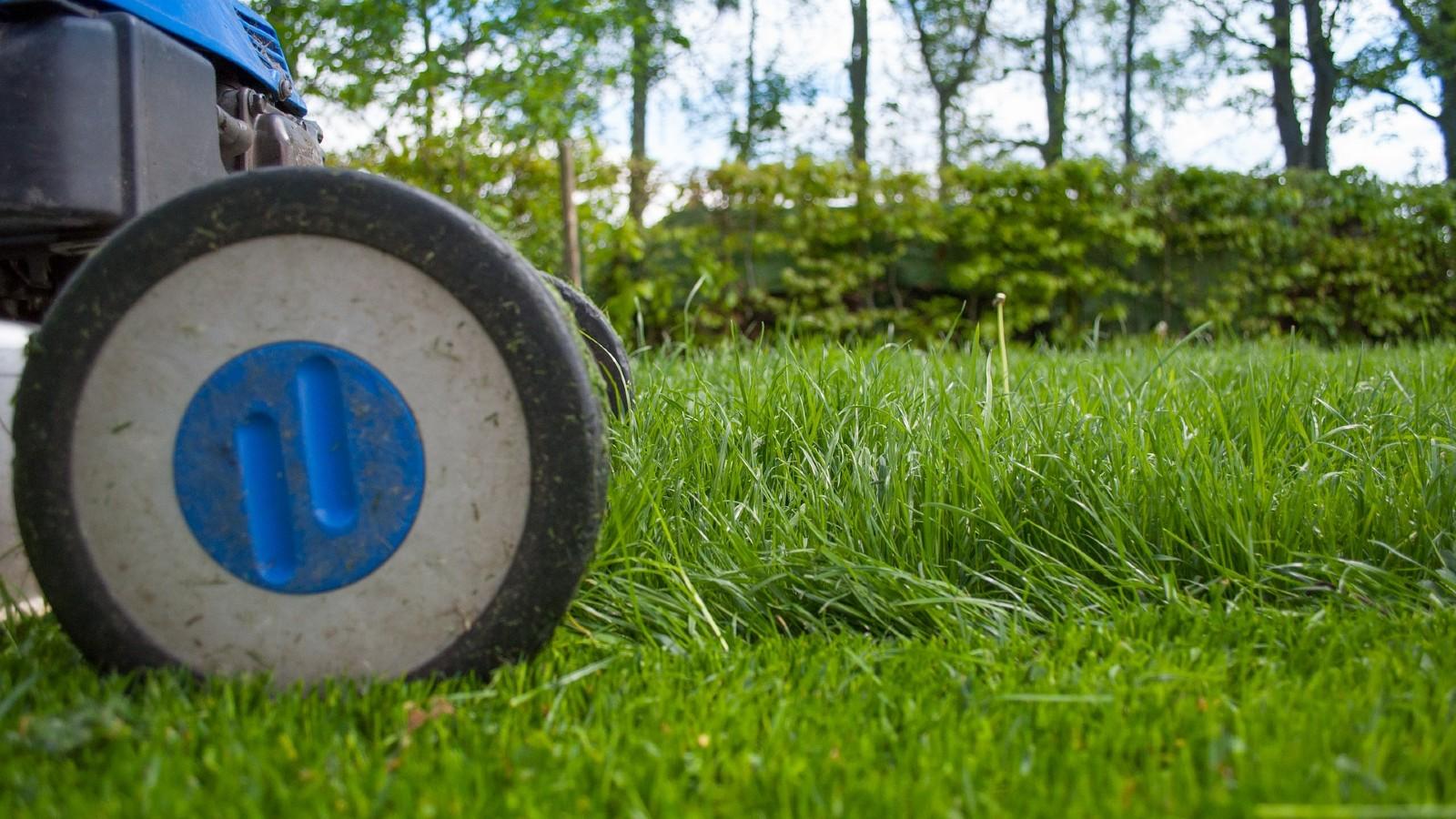Proper mowing greatly improves the appearance of lawns, promotes a healthy root system, reduces weed encroachment, and lessens disease pressure.
Mowing height
- Low mowing is a major cause of lawn deterioration. Remove no more than one-third of the grass blade each time you mow. For example, to maintain a 3" height, mow when the grass reaches a height of 4". Mowing to the proper height can reduce weeds and diseases by 50% to 80% in tall fescue. Scalping the lawn is a major cause of a crabgrass infestation.
- Removing larger amounts of leaf surface may result in physiological shock to the plant, cause excessive graying or browning of leaf tips, and greatly curtail photosynthesis reducing the health of the grass.
- Low mowing also stresses the root system causing the turf to become weaker and less drought tolerant.
- Raise the mower height up one-half to one inch higher during hot, dry periods in the summer. And do not mow when grass is dormant during the hottest, driest part of the summer.
Recommended mowing heights
- Tall fescue - 3" - 4" or set the mowing height on your mower's highest setting, especially in the hottest, driest part of the summer.
- Kentucky bluegrass - 2 1/2" - 3 1/2"
- Fine fescue - avoid mowing in the hottest, driest part of the summer - 3"- 4"
- Zoysiagrass - 1/2" - 1"
Frequency of cut
- Infrequent mowing allows the turf to grow too tall. Subsequent mowing removes too much leaf surface and may shock the plants.
- Weekly mowing may not be enough, especially during the peak period of leaf growth in the spring.
The rate of growth depends on weather, season, soil fertility, moisture conditions, and species. - Grasscycling (see below) can be practiced on lawns cut at proper intervals.
- Sharpen mower blades at the beginning of the mowing season and then again every 4-6 weeks.
Grasscycling
Grasscycling is the simple practice of letting grass clippings decompose on the lawn after mowing.
- Helps protect the environment by reducing the amount of grass clippings in the landfill.
- Encourages a healthier lawn by returning both macronutrients and micronutrients to the soil in a slow-release form. Can reduce fertilizer use by 25%, saving time, and money and decreasing the amount of runoff into the Chesapeake Bay and its tributaries.
- Eliminates the need to bag or rake grass clippings.
- Does not contribute to thatch buildup or increase turf diseases. Grass clippings are largely composed of water and decompose rapidly. Microbial decomposition of clippings occurs on soils that are maintained at a pH of 6.0 to 6.8.
Tips on grasscycling
- Mow with sharp blades.
- Mow the lawn when dry. After a rainy period, large clumps of grass can be remowed or raked up and removed.
- Mow on a regular basis. Remove no more than one-third of the leaf blade. During the spring it may be necessary to mow twice a week.
- Mulching mowers hasten the decomposition process but are not necessary. Check availability of mulching "kits" which can be purchased for some models of lawnmowers. Kits include a plate that blocks discharged shoots, forcing clippings back through the blades. Check your lawn mower manual for information.
- Avoid the overuse of fertilizer.
